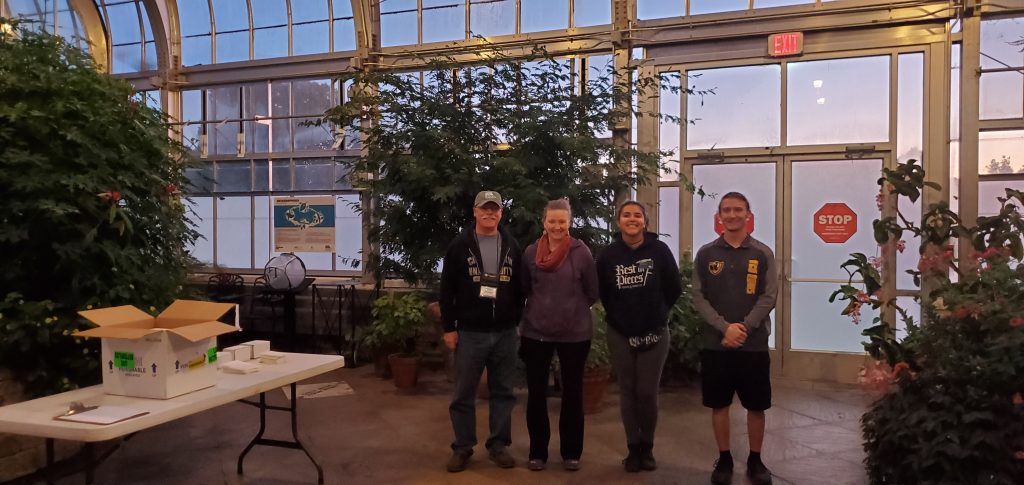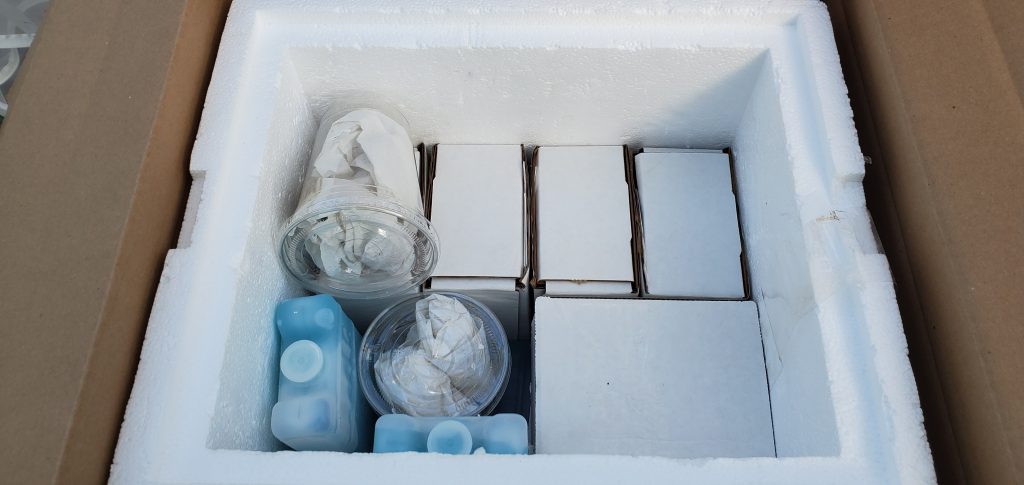Butterflies Fly to Tucson Botanical Gardens
It is a brisk October morning as I step out of my car and head for the Conservatory. I say “morning,” yet heavy shadows still blanket the garden, and I can even spot a few stars in the sky that are unwilling to give up the ghost. It is chilly, enough that you need a jacket even in the notoriously warm butterfly exhibit. Perfect. These are exactly the conditions I was hoping for this morning; ones that make for sleepy, sluggish butterflies. It is the morning of the so-called “butterfly roundup!”
Butterfly Travel
Lots of people ask about what happens to the butterflies after their time in at M&T Bank Butterflies LIVE!, and the question only becomes more frequent as we get further into the cool season. The answer may surprise you: they go on an all-expenses-paid trip to Arizona! Specifically, they end up at the Tucson Botanical Gardens, where they become a part of another butterfly exhibit.
So why Tucson? Well, we and the Tucson Botanical Gardens have a yearly agreement; we mail each other our leftover butterflies at the end of our respective seasons. At Lewis Ginter, we are unable to keep the butterfly exhibit operating in the winter, because it is difficult and costly to keep tropical butterflies in the cooler temperatures, and also because we utilize the space for parts of our Dominion Gardenfest of Lights. In Tucson, they have a similar problem with the conditions in the summer: it gets too dry for many rainforest butterflies there. Therefore, we run our exhibit in the summer months, and Tucson operates in the winter. This works out perfectly for a butterfly trade!
The next question is, of course, how do we pack up and send hundreds of live butterflies? Well, the first step is catching the flighty little bugs!
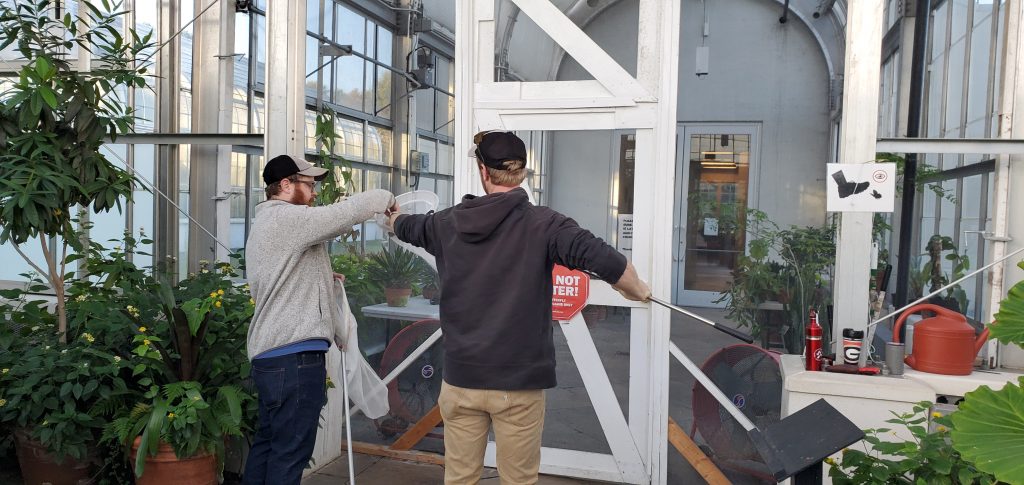
Senior Butterfly Curator Daniel Wright and Conservatory Horticulturalist Ryan Olsen capturing a particularly jumpy butterfly.
This is the reason we have arrived so early in the morning: with cool, dark conditions, many of the butterflies will still be asleep. They are easy to gently pluck off of their perches when they are like this, and this way we can capture a large number relatively quickly. Of course, there are some early risers out there, like the owl butterflies, who love to fly at dusk and dawn (not so much during the day!), and for these we need nets. For the especially stubborn high flyers, we will use a leaf blower, or occasionally a gentle spray of water from the hose to coax them into net range.
Tucson Botanical Gardens
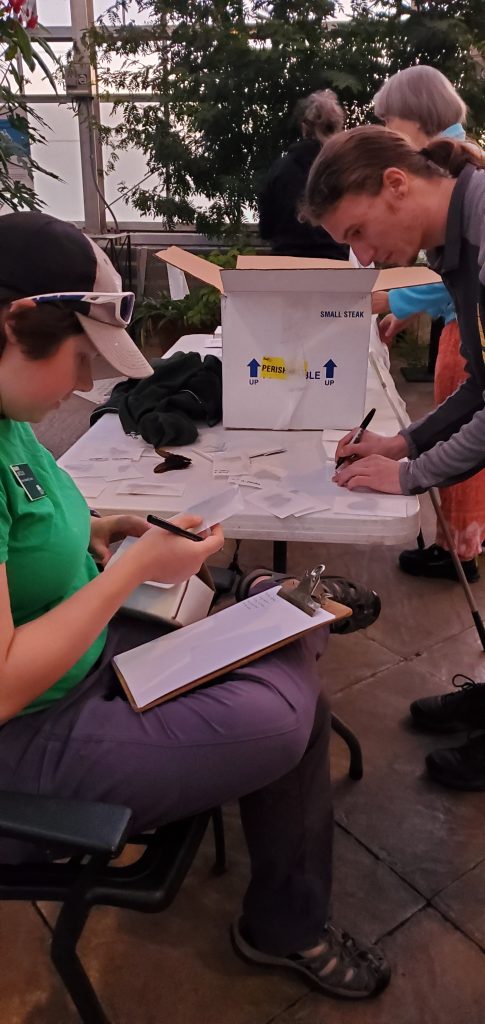
Senior Butterfly Curator Mary Lincoln (that’s me!) and Seasonal Butterfly Curator Tyler Crossen working to identify and record captured butterflies.
After we capture them, each butterfly gets placed into its own small glassine envelope. The envelope is snug enough that the butterfly can’t move much, and so injury to itself is minimized.
The envelopes get the butterfly’s scientific name written on them, and we record the number of butterflies we capture of each type. This is for both Tucson’s records and our own since tropical butterflies are highly regulated, especially when shipping across state lines.
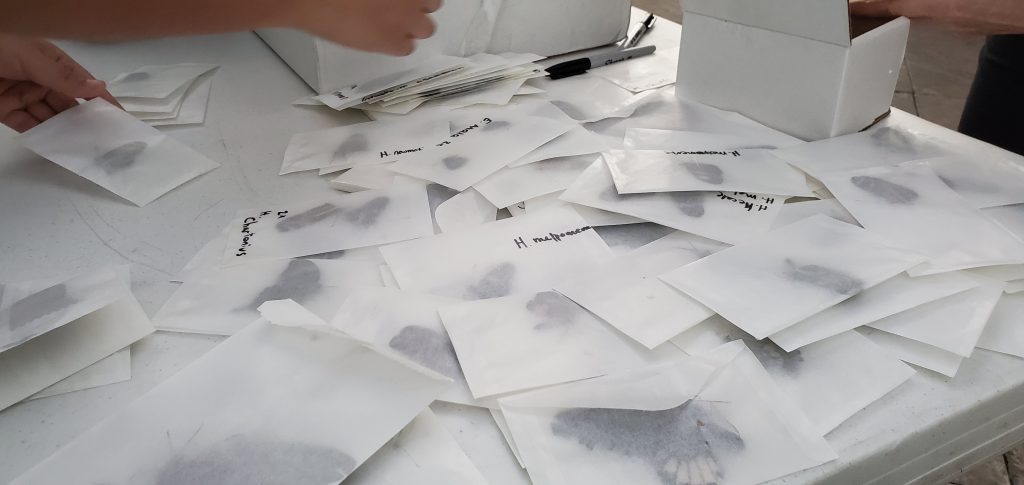
Butterflies in their envelopes waiting to be identified, recorded and packaged ready for their flight to Tucson Botanical Gardens.
Butterfly Round-Up
The butterfly-filled envelopes are then placed in small boxes for organizational purposes, and those boxes are fitted into a larger Styrofoam box. We place several ice packs in this larger box, along with insulating materials, in order to keep it cool enough that the butterflies will remain in a state of dormancy. This further prevents injury to the insects on their overnight trip and makes the process less stressful for them. This box is packaged up and sent off via FedEx’s handy overnight shipping. Believe it or not, they actually have a special option for sending live insects (provided you have a permit for that sort of thing, which thankfully, we do!) The butterflies will be in Tucson by the time I’m finished writing this!
All in all, the butterfly roundup typically takes about three or four hours. We usually have 200 butterflies to capture, record, and pack up. This is thankfully a lot less than the 500+ we usually have in the exhibition since we stop receiving shipments a few weeks before the closing date. The population will naturally fall, but we will still be left with a bunch of the longer-lived butterflies, which make prime candidates for shipping. This year we counted 235 butterflies going to Tucson Botanical Gardens, with 45 different species represented (including chrysalides). Come warmer weather, we will get a package from them with a few hundred of their butterflies, we’ll be ready for another great season of Butterflies LIVE!
